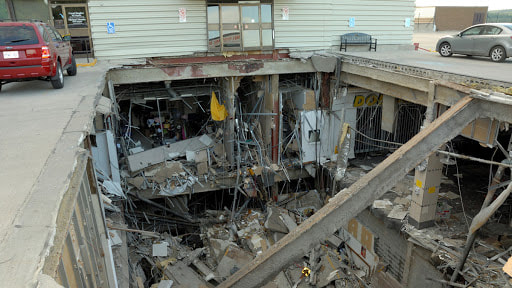FORENSIC STRUCTURAL
Forensic engineers are specialized engineers who study materials, devices, structures, and products that do not work as they were designed to or fail to work completely. They also provide written or oral testimony regarding their findings or educated opinions in legal proceedings. Forensic engineers have backgrounds in many different engineering disciplines.
Engineering investigations of buildings, bridges, and other constructed facilities that fail or do not perform as intended, rendering opinions as to the causes of failure or underperformance, and giving testimony in judicial proceedings are fields of professional practice often referred to as forensic structural engineering. Forensic structural engineering is the application of engineering sciences for the investigation of failures or performance problems. Forensic structural engineering is a highly specialized field of engineering practice and thus, requires expert knowledge of engineering and legal procedures during structural failure investigation. The role of the forensic structural engineer, as an expert consultant, is to determine the cause(s) of failure of a constructed facility and to provide the technical bases upon which the responsibilities for the failure can be identified. During structural investigation forensic structural engineering services assess the damage to materials, products or structures and evaluate repair estimation. Failures result from a variety of causes involving both technical/physical problems and human error/procedural factors. Often the root causes of a failure or accident are difficult to isolate and quantify. The causes may be a combination of interrelated deficiencies. Things can go wrong anywhere along the planning– design–construction–service lives of a constructed facility.
These cases and some of what can go wrong in them include the following:
• Planning: system concept
• Design: concept, calculations, drafting
• Design–construction interface: shop drawing detailing, drafting, review and approval
• Construction: erection, inspection, accident
• In service: misuse, overload, alteration, adjacent construction
• Deterioration: lack of maintenance
Failures are always the result of human action, which lie in one or more of the following:
• Negligence: failure to properly analyze or detail the design or the disregard of codes and standards
• Incompetence: failure to understand engineering principles or respect the technical limitations of materials or systems
• Oversight: failure to follow design documents and safe construction practices
• Greed: shortcuts; intentional disregard of industry requirements and safe practices
• Disorganization: failure to establish a clear organization and define responsibilities of parties.
• Miscommunication: failure to establish and maintain lines of communication among the parties.
• Misuse, abuse, neglect: using the facility for purposes beyond its design intent or foregoing preventive maintenance.
• Planning: system concept
• Design: concept, calculations, drafting
• Design–construction interface: shop drawing detailing, drafting, review and approval
• Construction: erection, inspection, accident
• In service: misuse, overload, alteration, adjacent construction
• Deterioration: lack of maintenance
Failures are always the result of human action, which lie in one or more of the following:
• Negligence: failure to properly analyze or detail the design or the disregard of codes and standards
• Incompetence: failure to understand engineering principles or respect the technical limitations of materials or systems
• Oversight: failure to follow design documents and safe construction practices
• Greed: shortcuts; intentional disregard of industry requirements and safe practices
• Disorganization: failure to establish a clear organization and define responsibilities of parties.
• Miscommunication: failure to establish and maintain lines of communication among the parties.
• Misuse, abuse, neglect: using the facility for purposes beyond its design intent or foregoing preventive maintenance.
The types of cases of failures that forensic engineering expert consultants/witnesses encounter can be categorized into three groups:
• When a “condition” surfaced: This is when some structural deficiency, such as possible overstressing, cracking, excessive deformation, objectionable vibrations, etc., is observed.
• When a failure or collapse occurred: This is when part or all of the structure has failed or collapsed.
• When dispute resolution or litigation is already in progress: This is when the damage had already occurred sometime in the past, and the legal activities, such as preparation for trial in court, are underway. In forensic engineering work, design codes and standards provide the baseline for the design requirements that were in effect at the time when the design was done, and they define the minimum level of performance that the failed structure should have met. Satisfying the governing code is a minimum requirement. Copies, especially old copies of design codes, standards and manuals are valuable references on a forensic engineer’s bookshelf.
• When a “condition” surfaced: This is when some structural deficiency, such as possible overstressing, cracking, excessive deformation, objectionable vibrations, etc., is observed.
• When a failure or collapse occurred: This is when part or all of the structure has failed or collapsed.
• When dispute resolution or litigation is already in progress: This is when the damage had already occurred sometime in the past, and the legal activities, such as preparation for trial in court, are underway. In forensic engineering work, design codes and standards provide the baseline for the design requirements that were in effect at the time when the design was done, and they define the minimum level of performance that the failed structure should have met. Satisfying the governing code is a minimum requirement. Copies, especially old copies of design codes, standards and manuals are valuable references on a forensic engineer’s bookshelf.
The goals of structural failure investigation are
• To determine causes of failure (most commonly desired information)
• To compare statement by witnesses or injured parties with physical evidence
• To ascertain whether an illegal or improper activity was causative
• To assess damage to materials, products or structures and evaluate repair estimate.
• To determine causes of failure (most commonly desired information)
• To compare statement by witnesses or injured parties with physical evidence
• To ascertain whether an illegal or improper activity was causative
• To assess damage to materials, products or structures and evaluate repair estimate.






